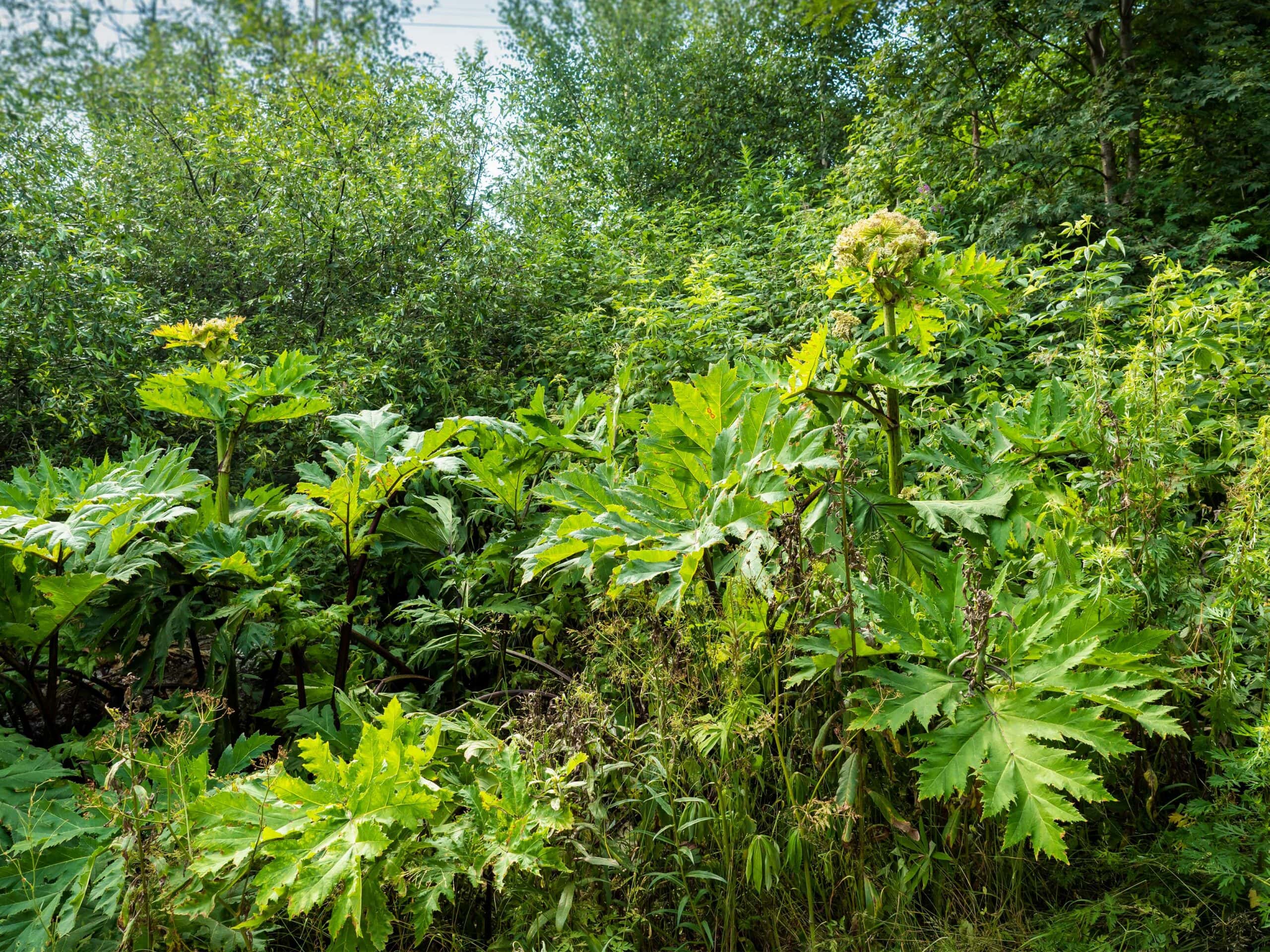What are the alien hogweeds?
Giant hogweed and Persian hogweed is established in Finland, Sweden and Norway. About Sosnowsky’s hogweed there’s only individual observations made in Finland and none in Sweden or Norway.
Sosnowsky’s hogweed (Heracleum sosnowskyi), Persian hogweed (Heracleum persicum), and giant hogweed (Heracleum mantegazzianum) are umbelliferous and very large. They can grow remarkably tall, the height can be more than three meters and in a lush place even up to five meters.
Plants in Heracleum-group are very resistant to northern conditions and have spread throughout Norway, Sweden and Finland expect the northernmost Lapland. They are competitive and they grow in a wide range of habitats such as fields, roadsides, forests, and beaches where they form wide dense stands which reduce biodiversity.
Weed the small individuals, cut the big ones!
All three hogweed species reproduce from seeds and the Persian hogweed can reproduce also vegetatively. The seeds generally germinate well and remain incubated in the soil for several years, and therefore new populations may come up as a surprise.
The plants are easy to weed or cut when they are still small. Small plant populations can also be covered with plastic film or similar material which shrivels the plants and prevents the seeds from growing. Big plants can be removed by breaking the taproot with a shovel or other tool. Eradicating the plants takes several years and regular monitoring is needed still after this to prevent the population from regenerating.
How to tell the alien Heracleum-group from indigenous plants?
The alien Heracleum-group consists of three species and identifying the species from each other can be difficult. Anyway, more important than identifying the alien species from each other is identifying the alien species from the indigenous plants. Indigenous species like the cow parsnip subspecies (Heracleum spondylium, H. sibiricum), wild angelica (Angelica sylvestris) and garden angelica (A. archangelica) resembles the hogweeds but are clearly smaller, in terms of all their dimension.



